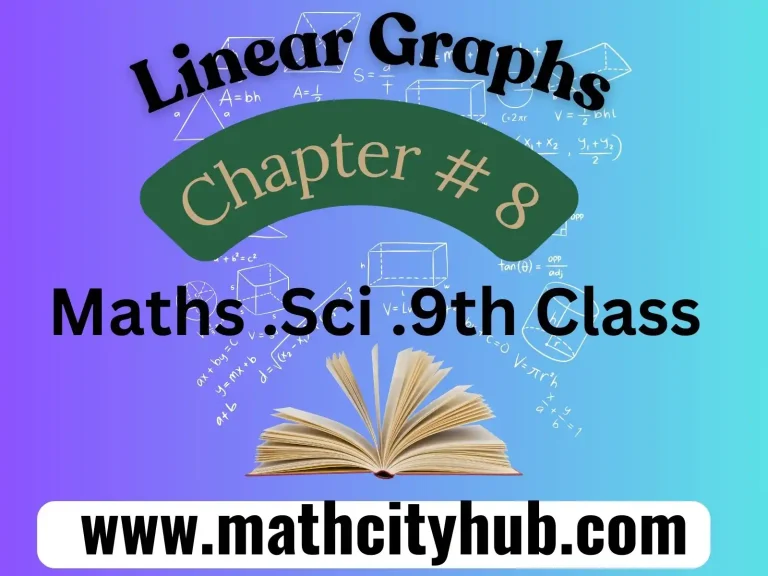Factorization of a Cubic Polynomial:In the vast landscape of algebraic expressions, the Factorization of a Cubic Polynomial stands as a beacon of mathematical intrigue. As we embark on this journey, we’ll unravel the complexities and nuances that define cubic polynomials and explore the transformative power of factorization.
Brace yourself for an exploration that goes beyond the theoretical, delving into real-world applications and shedding light on the significance of mastering this mathematical marvel.
Join us as we demystify the Factorization of a Cubic Polynomial and open the door to a realm where equations take on new meanings and mathematical insights pave the way for a deeper understanding of this captivating subject.
The Basics: Understanding Cubic Polynomials
Factorization of a Cubic Polynomial
Factorization of a Cubic Polynomial involves the process of breaking down a cubic equation into simpler expressions, unveiling its essential components.
This mathematical procedure is fundamental in simplifying complex algebraic expressions, particularly those of third-degree polynomials.
In essence, a cubic polynomial is an algebraic expression of the form
x represents the variable. Factorization transforms this cubic expression into a product of its factors, each representing a linear or quadratic term.
The objective of this process is to reveal the roots or solutions of the cubic equation, providing insights into its behavior and characteristics.
By factoring a cubic polynomial, mathematicians and scientists can gain a deeper understanding of the underlying relationships between its components.
Factorization techniques vary, including methods like synthetic division, grouping, and leveraging cubic identities. These methods not only simplify the cubic polynomial but also offer efficient ways to solve and analyze equations with cubic terms.
Real-world applications of cubic polynomial factorization are diverse, ranging from engineering structures to economic modeling. Understanding and mastering this mathematical concept empower professionals and enthusiasts alike to tackle complex problems with precision and clarity.
In summary, the Factorization of a Cubic Polynomial is a transformative process that unravels the intricacies of cubic equations, providing valuable insights and applications across various fields.
Whether in academia or practical scenarios, the ability to navigate and manipulate cubic polynomials through factorization is a skill that opens doors to a deeper understanding of mathematical relationships.

Breaking Down the Equation
Examine the components of an equation with a cubic polynomial. Discover the secret of how factorization reduces an apparently complex mathematical expression to a more digestible and understandable form.
Applications in Real Life
Discover the practical applications of understanding and employing the factorization of cubic polynomials. From engineering marvels to economic models, this knowledge proves invaluable in various fields.
Mastering the Techniques
- Advanced Methods in Factorization of a Cubic Polynomial Advanced methods in the factorization of a cubic polynomial involve utilizing techniques such as synthetic division, long division, and the factor theorem to identify linear factors.
- The cubic polynomial can be factored further using advanced algebraic methods, including grouping and factoring by grouping, to simplify the expression and identify additional factors.
- For irreducible factors that are quadratic, advanced methods may employ techniques like completing the square or using the quadratic formula to find complex roots.
- Utilizing numerical methods, such as the rational root theorem or trial and error, can aid in identifying possible roots, facilitating the factorization process.
- The use of computer algebra systems and advanced software can also provide efficient solutions for factorizing cubic polynomials, especially when dealing with complex coefficients or roots.

Synthetic Division Demystified
Explore the world of synthetic division as a powerful tool in the factorization arsenal. Grasp the step-by-step process of applying synthetic division to cubic polynomials, unlocking efficient solutions.
Grouping Strategies
Unlock the potential of grouping as a strategic approach to factorization. Learn how grouping can simplify cubic polynomials, making the process more intuitive and less daunting.
Factoring by Cubic Identities
Dive into the elegance of factoring cubic polynomials using identities. Understand how leveraging these mathematical shortcuts can streamline the factorization process.
In Practice
Real-world Scenarios and Case Studies Immerse yourself in practical scenarios where the factorization of cubic polynomials plays a pivotal role. Explore case studies, anecdotes, and real-life examples that underscore the relevance of this mathematical concept.
Engineering Marvels
Witness how factorization contributes to the design and analysis of complex engineering structures. From bridges to spacecraft, the factorization of cubic polynomials plays a crucial role in ensuring structural integrity.
Economic Modeling
Uncover the role of factorization in economic modeling and forecasting. See how mathematical precision, derived from cubic polynomial factorization, aids in making informed decisions in the financial world.

Questions & Answers
Factorization is a broad mathematical concept applicable to various polynomial degrees. However, this article specifically delves into the factorization of cubic polynomials.
Absolutely! Factorization is a versatile tool that extends beyond the confines of academia. Its applications are abundant in daily problem-solving scenarios.
Yes, several online tools can assist in factorizing cubic polynomials. However, understanding the manual process enhances overall mathematical comprehension.
Factorization of cubic polynomials plays a vital role in algebraic geometry, providing insights into the geometric properties of algebraic varieties.
Indeed, factorization is a powerful method to simplify and analyze real-world equations, making them more comprehensible and solvable
While cubic polynomial factorization is robust, certain irreducible polynomials may resist factorization, posing intriguing challenges for mathematicians.

Conclusion:
In conclusion, our journey through the Factorization of a Cubic Polynomial has unveiled the profound significance of this mathematical process.
Beyond its theoretical complexities, factorization emerges as a powerful tool with far-reaching applications.
We have explored the foundational aspects of cubic polynomials, understanding how their intricate equations can be streamlined and simplified through factorization.
The techniques, including synthetic division, grouping, and cubic identities, offer diverse approaches to unraveling these mathematical puzzles.
The real-world implications of cubic polynomial factorization have been illuminated, demonstrating its role in engineering marvels, economic modeling, and everyday problem-solving.
This mathematical marvel extends beyond the confines of academia, proving to be a key player in shaping the structures of our physical world and guiding decision-making processes in the financial realm.
As we conclude, it is evident that the Factorization of a Cubic Polynomial is not merely an abstract concept confined to textbooks. Instead, it is a dynamic tool that empowers mathematicians, scientists, and enthusiasts to navigate and understand the complexities of cubic equations.
Embracing this knowledge opens doors to a deeper appreciation for the elegance and practicality embedded in the world of mathematics. So, let us continue to explore, learn, and apply the insights gained from the factorization of cubic polynomials in our mathematical endeavors.

Must Read:
Exercise.2.2: Properties of Real Numbers
Exercise.2.3: Radicals And Radicands
Exercise.2.4: Law of Exponents/ Indices
Exercise.2.6: Basic Operations on Complex Numbers
9th-Math-Ch-2-Review: Real And Complex Numbers
Exercise.3.1: Scientific Notation
Exercise.3.2: Common and Natural Logarithm
Exercise.3.3: Laws of Logarithm
Exercise.1.6: Solution Of Simultaneous Linear Equations
Exercise.1.5: Multiplicative Inverse a Of Matrices
Exercise.1.4: Multiplication Of Matrices
Math Full Book 9th Class
Exercise # 5.4
Azam Bodla
M.Phil. Mathematics, Content Writer, SEO Expert
Web Developer, Online Tutor
Call or WhatsApp: +923059611600
Gmail:azambodlaa@gmail.com






